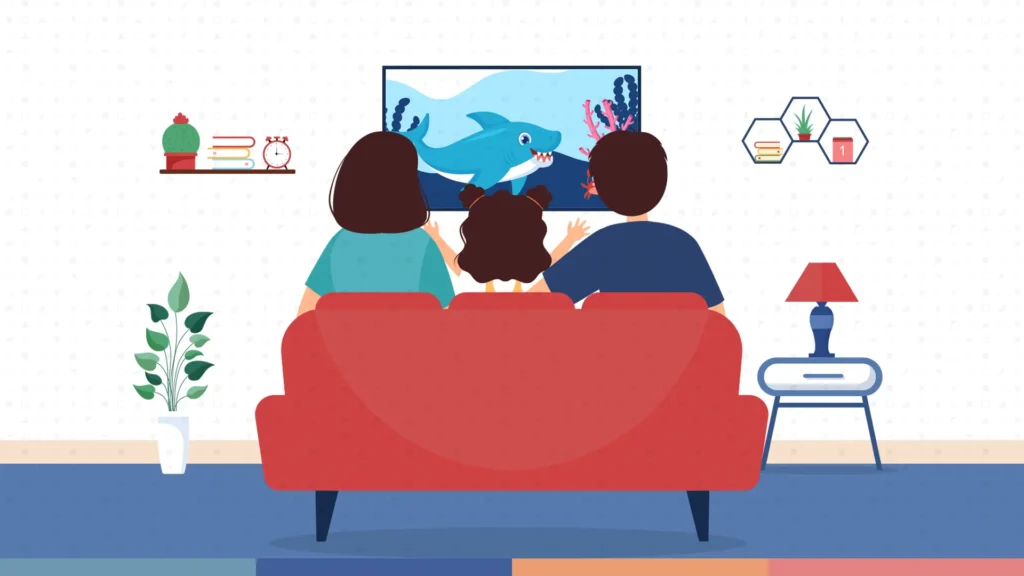Do You Agree That TV Shows Aren’t What They Used to Be?

If you grew up in the 90s (like me), you probably remember the great shows that taught us so much. Want to learn Spanish? Dora the Explorer. Need help with math? Team Umizoomi. For critical thinking and problem-solving, there was Blue’s Clues. For arts and crafts, we had Art Attack. And for mnemonic devices? Animaniacs. There were so many more if you think about it.
These shows offered more than just entertainment. They were thoughtfully designed to engage young minds and provide educational value. Dora the Explorer, for instance, encouraged interaction by asking viewers to respond and solve puzzles, fostering both language skills and problem-solving abilities. Blue’s Clues took a similar approach by presenting clues and encouraging kids to piece them together, making learning feel like a fun detective game. Animaniacs, though whimsical and comedic, embedded historical facts, wordplay, and geography lessons into its episodes. Such content not only made learning fun but also seamlessly integrated education into everyday entertainment.
But nowadays, there aren’t many of them left. Almost all of us hand over shows to our kids on phones, tablets, and other devices. Back in the day, after we watched our favorite shows, we stopped because they were over and we moved on to other activities throughout the day. But with smartphones and tablets, it goes on forever. Even worse, are you paying attention to what they’re watching? I mean, really monitoring them?
The availability of streaming platforms and devices has undoubtedly changed the way our children consume media. Unlike traditional TV schedules, which dictated viewing times and created natural breaks, streaming services offer endless access to content. While this on-demand approach can be convenient, it often leads to binge-watching, reducing opportunities for outdoor play or hands-on learning experiences. Moreover, with the sheer volume of content available, it’s challenging for us parents to vet every show our kids watch. Some programs may lack educational value or, worse, promote inappropriate themes for young audiences. This raises an important question: How much screen time is too much, and how can we ensure that what children watch benefits their development?
The Best Parts of Educational Cartoons
Educational cartoons have always been special because they combine fun with learning. They use engaging characters, catchy songs, and interesting stories to teach valuable lessons. Shows like Dora the Explorer and Team Umizoomi make learning interactive and enjoyable, helping kids grasp new concepts effortlessly. These shows often incorporate problem-solving, critical thinking, and creativity, making them a great tool for early childhood education.
A study published in the International Journal of Computer Graphics & Animation (IJCGA) gives us some interesting insights. Researchers found that primary school students learned significantly better when they used interactive materials, like animations. The study showed that students were more enthusiastic and open to learning when the content was engaging and fun.
The researchers developed visual learning materials about the solar system using multimedia tools. They tested these materials in a primary school in Dhaka, dividing students into three groups: one taught traditionally, one with just the visual materials, and one with a blend of both. The results were clear: the blended approach, combining animations with teacher instructions, led to the best learning outcomes. Students not only answered more questions correctly but were also more excited about the lessons.
For example, Team Umizoomi’s focus on math skills, such as counting, patterns, and basic geometry, provides foundational knowledge in an accessible way. Similarly, Blue’s Clues promotes active participation by encouraging kids to think critically and engage with the storyline. The interactive nature of these shows ensures that children are not passive viewers but active participants in their learning journey. This format not only enhances cognitive skills but also builds confidence as children see themselves solving problems alongside their favorite characters.
Educational cartoons can introduce children to diverse cultures and languages, broadening their horizons and fostering empathy. Shows like Dora the Explorer expose children to basic Spanish vocabulary and cultural elements, helping them develop an appreciation for linguistic and cultural diversity from a young age. These programs also provide a safe and controlled environment for learning, where parents can trust the content their children are exposed to.
Moreover, shows like Animaniacs were ahead of their time. They introduced us to a lot of educational content in a fun and engaging way. Animaniacs featured segments that taught history, geography, and even grammar through catchy songs and humorous skits. For instance, the famous “Yakko’s World” song helped kids learn the names of countries around the world, while other segments introduced historical figures and scientific concepts in a memorable manner.
The Downside of Today’s Television
Unfortunately, today’s television landscape lacks the abundance of quality educational shows that we enjoyed in the past. Many channels have shifted their focus to entertainment-driven content. This shift means that children are less likely to encounter shows that are both entertaining and educational, which can impact their learning opportunities.
Sources have documented the decline in educational television programming. Historically, public and non-commercial television channels such as PBS in the United States played a significant role in offering educational content, particularly for children. Shows like Mister Rogers’ Neighborhood and Sesame Street were groundbreaking in their approach to combining entertainment with education. However, shifts in funding models, viewer preferences, and the proliferation of cable channels and streaming platforms have contributed to a reduction in such content.
Public broadcasting networks like PBS have seen their funding and influence diminish over time, while private channels have largely shifted to entertainment-driven programming to maximize ratings and revenue. This trend has particularly impacted the availability of educational shows for children, as these programs often require significant investment and may not attract the same commercial sponsorship as entertainment-focused content
A study of the television landscape has shown that even channels once known for their educational value, such as Discovery and History, now heavily feature reality TV and entertainment-focused content, deviating from their original missions.
The commercialization of children’s media partly drives this trend. Networks prioritize shows that attract larger audiences and generate merchandise sales, often sidelining educational programs in favor of action-packed or humor-centric content. While such shows can still be entertaining, they rarely provide the same level of developmental benefits as their educational predecessors. The decline in quality educational content is a missed opportunity, as television remains a powerful medium for reaching and teaching young audiences.
This makes it harder for parents to discover programs that align with their children’s learning needs. Without deliberate curation, children may gravitate toward purely entertaining content, further reducing the time spent on meaningful learning activities.
The Need for More Educational Content
Given the decline in educational TV shows, it’s crucial that we create more content that combines fun and learning. Educational cartoons have proven to be effective in teaching various subjects, and there’s a growing need to develop new shows that can capture the interest of today’s children while providing valuable lessons.
One solution is to revive the legacy of classic educational programs by incorporating modern technology and storytelling techniques. Additionally, collaborations between educators, child psychologists, and content creators can ensure that these programs address key developmental milestones and learning objectives as well as entertaining according to each age group.
In addition to traditional TV shows, we should also consider the role of technology in children’s lives. With kids spending more time on smartphones and tablets, we need to provide educational content through these devices as well. This includes not only cartoons and shows but also educational video games. Gamification can make education more engaging and effective. For example, apps that teach math through interactive puzzles or language skills through storytelling games can complement traditional learning methods. By creating interactive and fun learning experiences, we can ensure that children are not just entertained but also educated.
Ultimately, the goal should be to strike a balance between entertainment and education in children’s media. By offering high-quality, engaging content across various platforms, we can equip the next generation with the tools they need to learn, grow, and thrive in an increasingly digital world.
If you are interested in learning more about gamification and how it can benefit you or your organization
Check out our gamification services page and contact us today. We are ready to help you create a gamification experience that aligns with your needs and preferences.
The Authors

Junialdi Dwijaputra

Dias Setyanto
Related Articles
- All Posts
- All-EN
- Education-EN
- News-EN
- Service Highlight-EN









